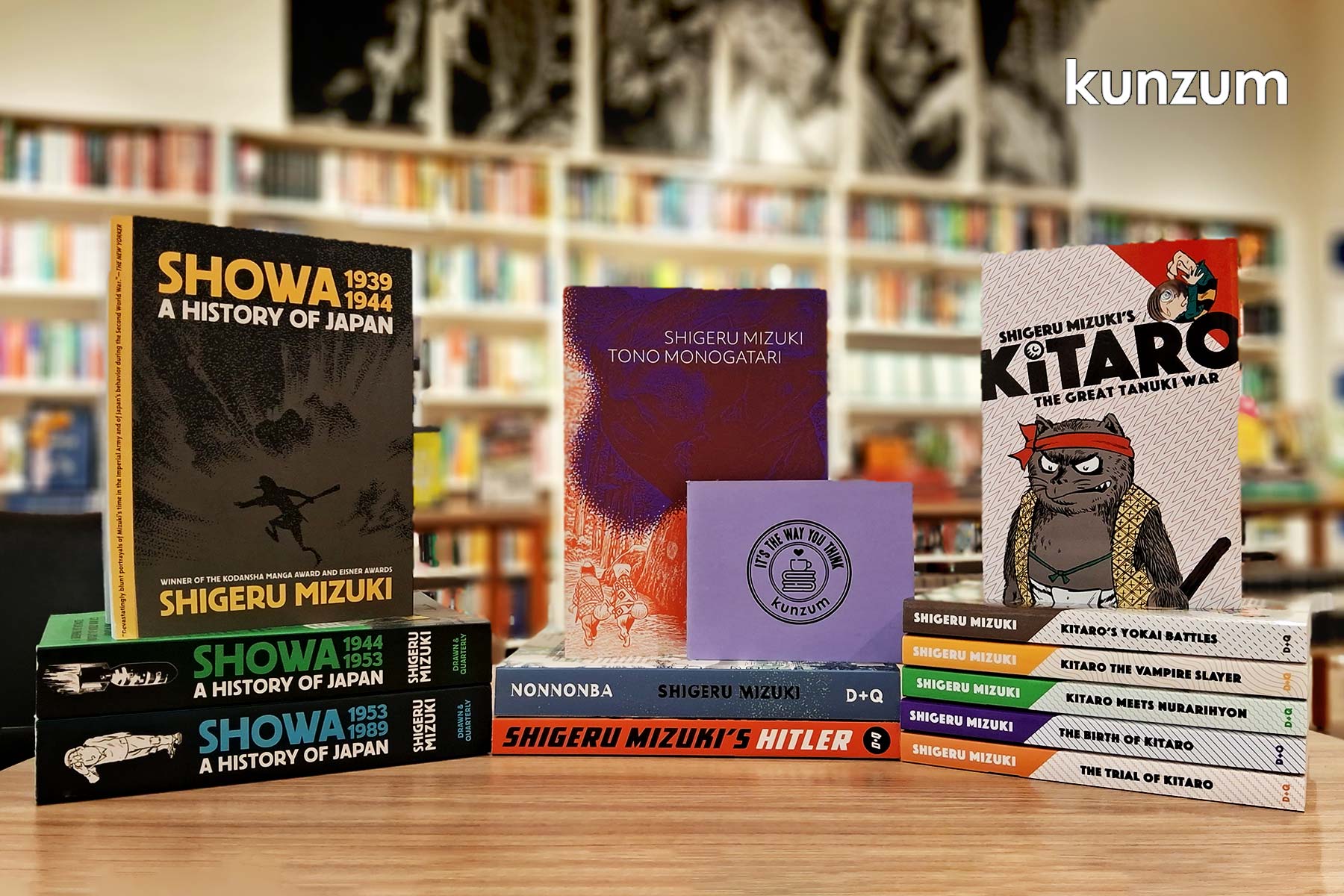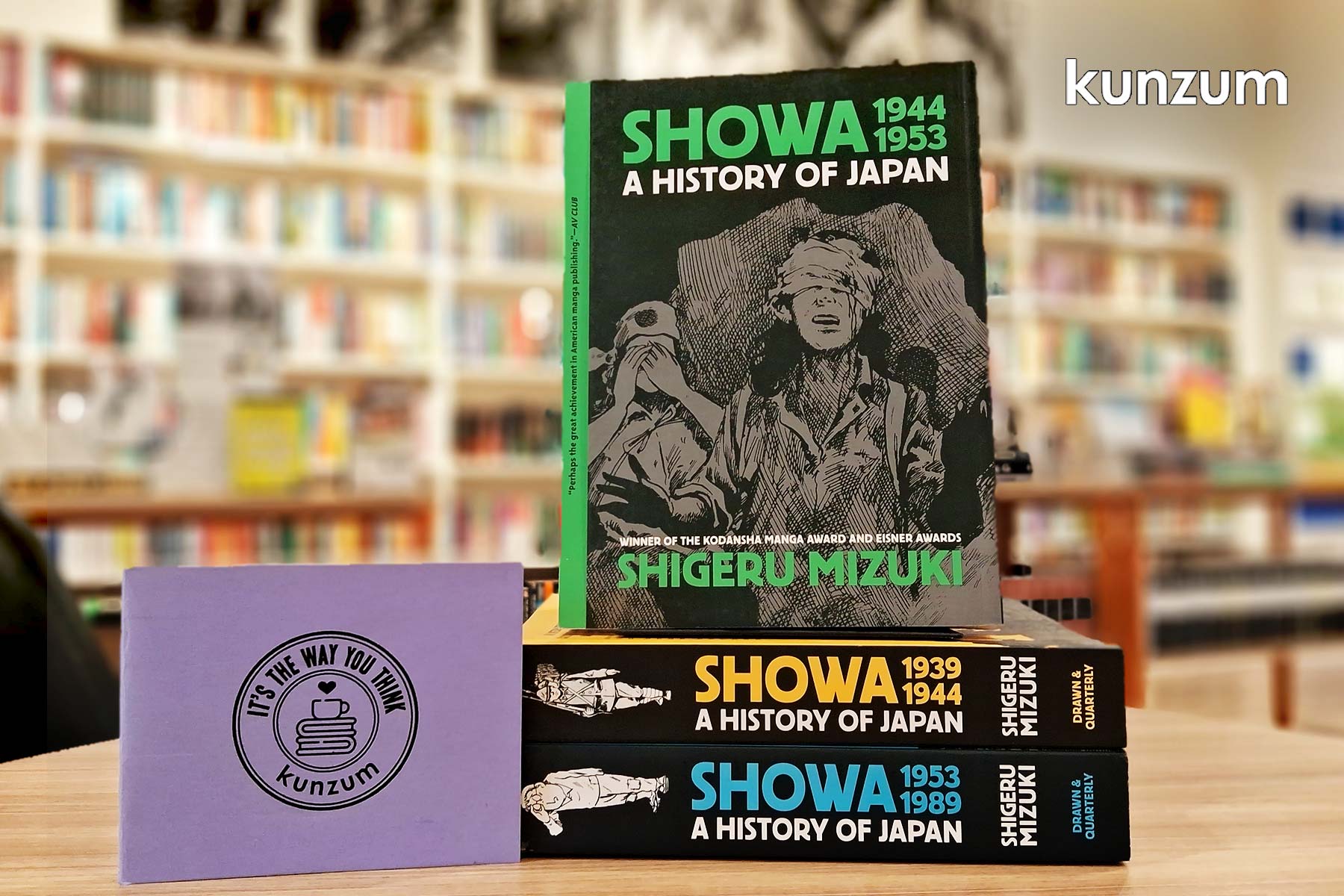
Shigeru Mizuki was no ordinary manga artist; he was a storyteller of unparalleled creativity whose works left an indelible mark on Japanese culture and beyond. Born in the tumultuous years preceding World War II, Mizuki’s experiences during the conflict, including the loss of his left arm, profoundly influenced his artistic expression and thematic exploration. Mizuki’s legacy is vast and multifaceted, spanning from whimsical tales of yokai to poignant reflections on the horrors of war. Let’s delve into his creations, beginning with his iconic “Kitaro” series.

The Kitaro Series
Step into the world of “Kitaro,” where yokai roam freely and supernatural adventures await at every turn. First serialized in 1960, Mizuki’s “Kitaro” series follows the exploits of a yokai boy named Kitaro, born in a graveyard and endowed with extraordinary powers. But Kitaro isn’t just any yokai; he’s a defender of humanity, battling malevolent spirits and monsters to keep the peace between worlds.
Each instalment of the “Kitaro” series serves as a delightful romp through Japanese folklore, blending fantastical elements with social commentary that is distinct to Mizuki’s signature style. From encounters with mischievous spirits to battles against ancient evils, Kitaro’s adventures offer a glimpse into Japan’s rich cultural heritage and a timeless exploration of morality and the human condition.

NonNonBa
In “NonNonBa,” Mizuki takes readers on a deeply personal journey into his own childhood, where the influence of yokai was as tangible as the air he breathed. Through the lens of his relationship with his grandmother, NonNonBa, Mizuki explores the legacy of his fascination with yokai and the supernatural.
Within the pages of “NonNonBa,” readers get to witness, as Mizuki recounts his grandmother’s tales of yokai, the impact they had on his young mind. It’s a touching ode to childhood wonder and the enduring power of storytelling to shape our lives.

Tono Monogatari
“Tono Monogatari” is a testament to Mizuki’s dedication to preserving Japan’s cultural heritage, one legend at a time. Adapted from a seminal work of Japanese folklore, Mizuki’s graphic novel breathes new life into the legends of the Tono region, populated by monsters, dragons, and foxes.
Through Mizuki’s evocative artwork and storytelling prowess, readers are transported to a world where the line between myth and reality blurs, and the supernatural coexists with the mundane. It’s a mesmerizing journey through Japan’s rich oral tradition, brought to life with Mizuki’s trademark blend of reverence and whimsy.

The Showa Series
The “Showa” series stands as Mizuki’s magnum opus, a sprawling epic that traces Japan’s tumultuous journey through the 20th century. Spanning multiple volumes, this monumental work offers a panoramic view of Japan’s Showa era, from the rise of militarism to the country’s post-war reconstruction.
Through meticulously researched historical accounts and deeply personal anecdotes, Mizuki paints a vivid portrait of a nation in flux, grappling with war, economic upheaval, and social transformation. It’s a gripping narrative that immerses readers in the complexities of Japan’s past, inviting them to confront the triumphs and tragedies of history with empathy and introspection.

Mizuki’s Hitler
In “Hitler,” Mizuki delves into the darkest recesses of human history to unravel the enigma of one of the 20th century’s most infamous figures. Through meticulous research and masterful storytelling, Mizuki retraces Hitler’s path from his humble beginnings to his catastrophic rise to power and eventual downfall.
The graphic novel offers a chilling glimpse into the mind of a tyrant, exploring the motivations behind Hitler’s actions and the devastating consequences of his reign. It’s a sobering reminder of the dangers of unchecked power and the enduring legacy of hatred and intolerance.
In conclusion, Shigeru Mizuki’s remarkable life and prolific career raise intriguing questions about the nature of creativity and resilience. Despite facing the adversity of losing his left arm and enduring the horrors of war, Mizuki defied expectations, living to the age of 93 and leaving behind a legacy that continues to resonate worldwide. The fact that Mizuki maintained a balanced lifestyle, prioritizing ample sleep over burning the midnight oil like many of his peers, adds another layer of fascination to his story. It prompts reflection on the relationship between adversity and creativity, and whether having less can indeed make one whole.
One cannot help but wonder: if Mizuki had two hands, would his influence have been the same? Does adversity fuel innovation, or is it the individual’s spirit that ultimately determines their impact on the world? Mizuki’s extraordinary life offers no easy answers, but it serves as a testament to the power of resilience, creativity, and the human spirit.
Pick up any one of Shigeru Mizuki’s brilliant books from any Kunzum store or WhatsApp +91.8800200280 to order. Buy the book(s) and the coffee’s on us.
